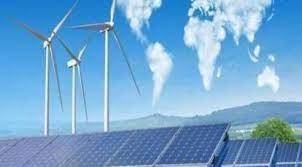WASHINGTON, Mar 20: India can achieve energy independence by 2047, when it celebrates 100 years of independence, according to a study by the US Department of Energy’s Lawrence Berkeley National Laboratory.
The study titled “Pathways to Atmanirbhar Bharat” also notes India’s energy infrastructure needs an investment of USD3 trillion in the coming decades.
It determined that achieving energy independence will generate significant economic, environmental, and energy benefits for India which include USD2.5 trillion in consumer savings through 2047, reducing fossil fuel import expenditure by 90 per cent or USD240 billion per year, enhancing India’s industrial competitiveness globally, and enabling its net-zero commitment ahead of schedule.
“India’s energy infrastructure requires a USD3 trillion investment in the coming decades, and our study finds that prioritizing new energy assets that are cost-effective and clean is crucial for long-term financial sustainability,” said Berkeley Lab staff scientist and co-author Amol Phadke in a statement issued by the Department of Energy.
The study shows that India’s energy independence pathway would involve the power sector installing more than 500 GW of non-fossil electricity generation capacity by 2030, a goal already announced by the government, followed by an 80 percent clean grid by 2040 and 90 percent by 2047.
It says that nearly 100 percent of new vehicle sales could be electric by 2035. Heavy industrial production could shift primarily to green hydrogen and electrification, it said.
Most of the lithium needed (estimated 2 million tons by 2040) for manufacturing new electric vehicles and grid-scale battery storage systems could be produced domestically using newly discovered reserves, it said.
In addition, the Indian industry must transition to clean technologies such as EV and green steel manufacturing. India is one of the world’s largest auto and steel exporters, with their largest markets in EU countries committed to carbon neutrality and a potential carbon border adjustment tariff, it said.
Phadke said, “India can leverage the existing policy framework it has laid out to expand the clean energy deployment.”
India, the third largest energy consumer in the world, currently imports 90 percent of the oil it needs, 80 percent of the industrial coal, and 40 percent of the natural gas. Price and supply volatility in the global energy markets, as witnessed in recent years, strain India’s foreign exchange reserves, resulting in economy-wide inflation, it said.
“The case for clean energy has never been stronger. India has achieved the world’s lowest renewable energy prices and has found some of the world’s largest lithium reserves,” said Nikit Abhyankar, Berkeley Lab scientist and the lead author of the study. “This can propel India towards cost-effective energy independence in a way that is economically and environmentally advantageous,” he added.
According to the press release, the study also finds that India has a unique advantage to leapfrog to a clean energy future since the bulk of its energy infrastructure is yet to be built.
“We find that India will embark on an ambitious energy transition in the coming decades,” said Priyanka Mohanty, a co-author and researcher at Berkeley Lab. “However, the transition runway provides time to strategically deploy clean technologies at scale and plan for a just transition.” (PTI)
Trending Now
E-Paper


